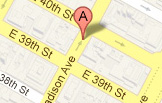By Richard E. Weltman
 A 3% cost of living adjustment became effective for new bankruptcy cases filed on and after April 1, 2016, according to the Judicial Conference of the United States. This means certain dollar amounts relating to small business chapter 11 cases, preference claims, means testing, and property exemptions went up. These adjustments to the federal Bankruptcy Code are automatically issued every three years to keep up with inflation.
A 3% cost of living adjustment became effective for new bankruptcy cases filed on and after April 1, 2016, according to the Judicial Conference of the United States. This means certain dollar amounts relating to small business chapter 11 cases, preference claims, means testing, and property exemptions went up. These adjustments to the federal Bankruptcy Code are automatically issued every three years to keep up with inflation.
Follow this link to the Federal Register page listing all of the old and new dollar amounts.
Here are six of the more important dollar adjustments for chapter 11 and other business bankruptcy cases:
- The total debt limit for a small business chapter 11 debtor, as defined in section 101(51D), will increase slightly to $2,566,050.
- The dollar amount in the bankruptcy venue provision, 28 U.S.C. §1409(b), which requires that actions to recover for non-consumer, non-insider debt be brought against defendants in the district where they reside, rises to $12,850 from $12,475.
- The aggregate creditor claim required to file an involuntary petition rises to $15,775 from $15,325.
- The employee compensation and employee benefit plan contribution priorities under sections 507(a)(4) and 507(a)(5) both increase to $12,850 from $12,475.
- The consumer deposit priority under section 507(a)(7) increases to $2,850 from $2,775.
- The minimum dollar amount required to bring a preference claim against a defendant in a non-consumer debtor case, specified in section 547(c)(9), increases to $6,425 from $6,225.
Many of the new adjustments will have a greater impact on consumer debtors. For example, the debt limit for an individual to qualify for a chapter 13 bankruptcy case will rise to $1,184,200 of secured debt, and certain federal exemption amounts will also increase (more about this below).
The four most meaningful dollar increases for consumers are these:
- Maximum IRA exemption tops out at $1,283,025, the most a debtor can exempt (protect) for traditional individual retirement accounts (IRAs) and Roth IRAs. Exemption is subject to doubling for married couples filing together where each has one or more separate high-asset IRAs to protect. (Section 522(n) of the Bankruptcy Code.) The higher IRA exemption cap does not apply to company pension plans, defined benefit plans, SEP IRAs (Simplified Employee Pensions), or simple IRAs (Savings Incentive Match Plans for Employees). Those latter qualified retirement vehicles continue to enjoy unlimited exemption protection.
- New restrictions on recently-acquired homestead property target states with high or unlimited homestead exemptions (such as Iowa, Massachusetts, Texas, and Florida), and may limit how much of the state’s homestead exemption is available. This higher cap applies if the property was acquired within 1,215 days (about 40 months) before the bankruptcy filing. The homestead exemption cap rises to $160,375. (Section 522(p).) Because New Jersey and New York state homestead exemptions are lower than the new federal cap, this adjustment should have little effect on local filers.
- Both New York and New Jersey permit debtors to choose between state or federal bankruptcy exemptions. The federal bankruptcy homestead exemption rises from $22,975 to $23,675 per debtor (or $47,350 for a married couple owning joint homestead). (Section 522(d)(i).) The New York homestead exemption ranges from $75,000 to $150,000 per debtor depending on the county of residence (subject to doubling for married debtors owning joint homestead). (CPLR §5206(a).)
- Also increasing is a debtor’s allowed disposable income. The Bankruptcy Code’s “means test” contains a formula for determining whether there is a “presumption of abuse” when a consumer files for chapter 7 relief. The formula was developed to help determine whether the filer has the “means” to pay a meaningful share of debt through a chapter 13 payment plan. Once “means” are established, the filer is “presumed” to be abusing the bankruptcy law by filing instead for chapter 7 liquidation. The means-test formula includes elements like “disposable income” (income minus allowed expenses) and the amount of total unsecured debt. It also incorporates some specific dollar amounts which are being increased, including the allowed amount of disposable income. (Sections 707(b)(2)(A)(i)(I & II) and 707(b)(2)(B)(iv)(I & II).)
Although the 2016 dollar adjustments are modest in scope and are not likely to materially change the rules of the game, they are important to keep in mind when assessing qualifications for new cases filed after April 1.
Contact Richard E. Weltman for advice and counsel concerning debtor or creditor compliance issues under the 2016 adjusted schedule of bankruptcy exemptions and dollar amounts.
About Weltman & Moskowitz, LLP, A New York and New Jersey Business, Bankruptcy, and Creditors’ Rights Law Firm:
Founded in 1987, Weltman & Moskowitz, LLP is a highly regarded business law firm concentrating on creditors’ rights, bankruptcy, foreclosure, and business litigation. Richard E. Weltman, a partner with the firm, focuses his practice on commercial and bankruptcy litigation, as well as creditor’s rights, foreclosure, adversary proceeding and clawback litigation, corporate counseling, M&A, and transactional matters. Richard can be reached at (212) 684-7800, (201)794-7500 or rew@weltmosk.com.







